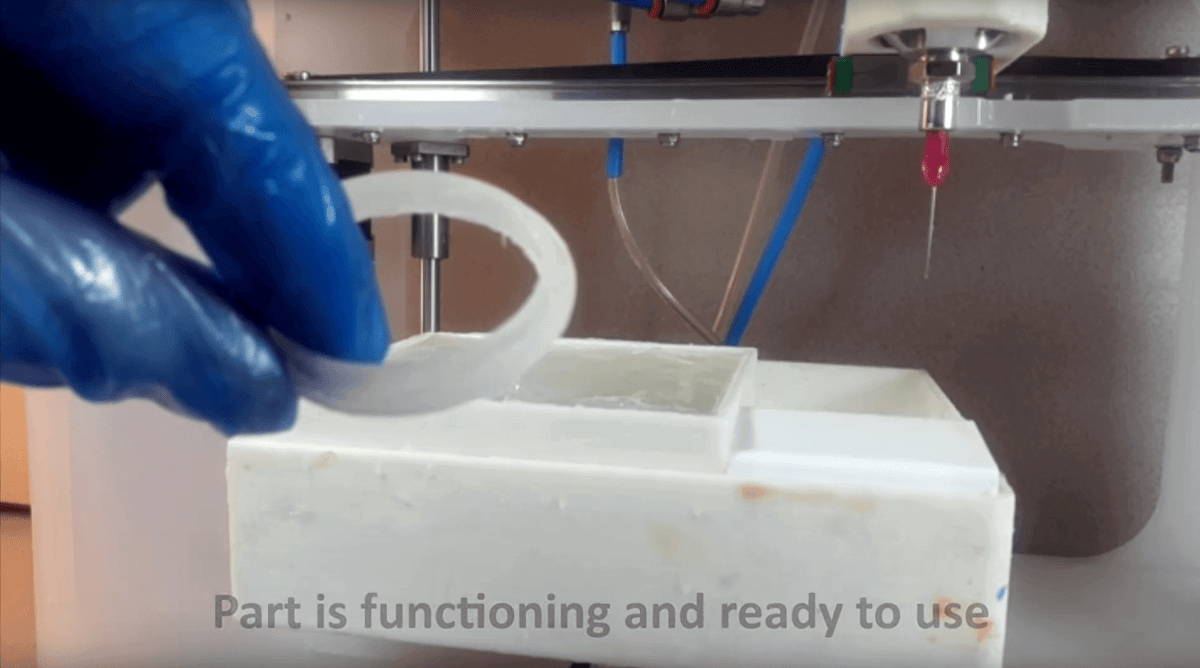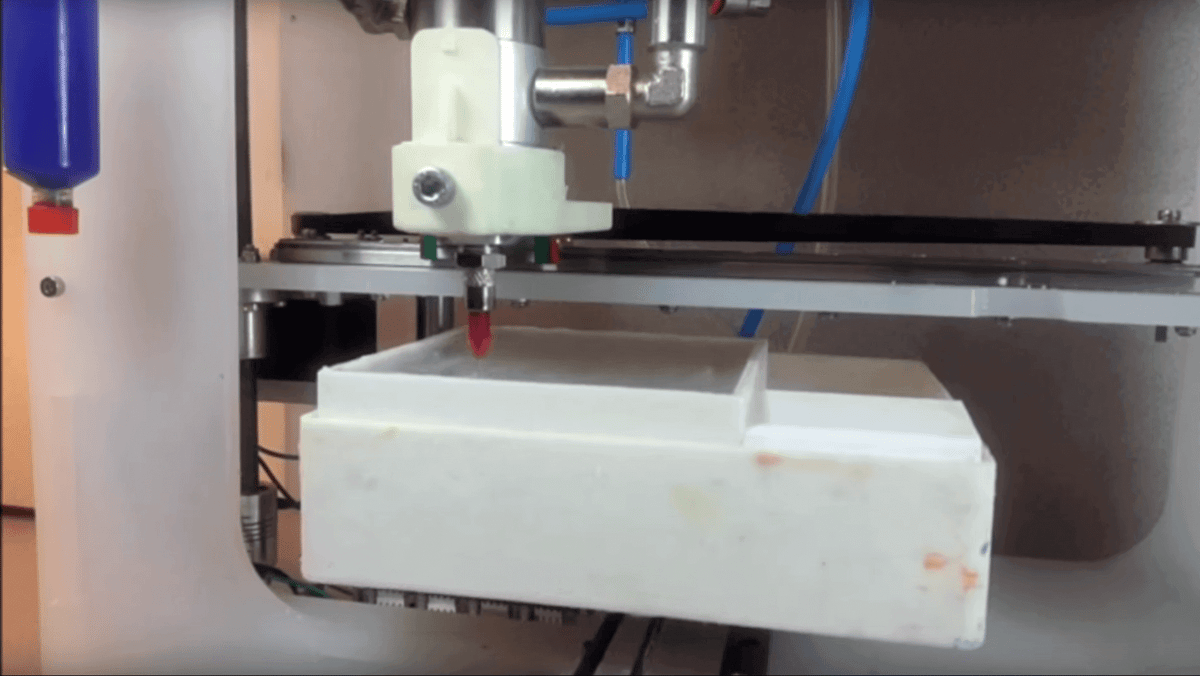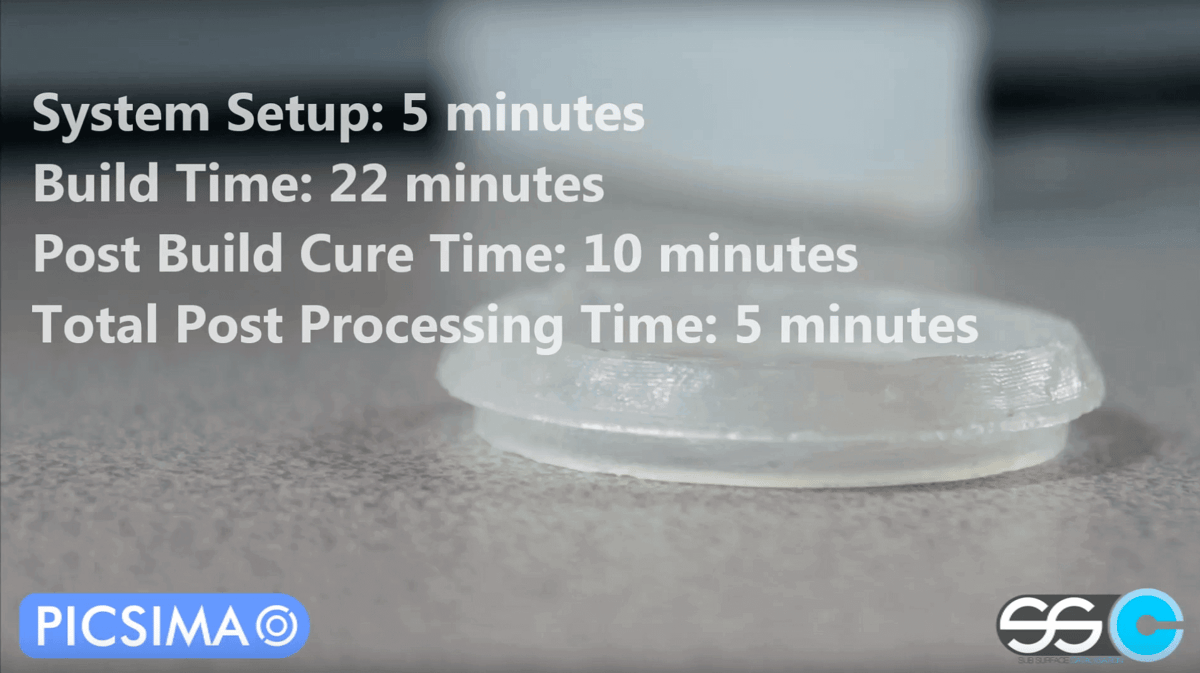
If you’re into 3D printing, Rachel Park doesn’t need an introduction. As a journalist, she covered the 3D printing and additive manufacturing sector since 1996. She led 3D Printing Industry as Editor in Chief and also edited Disruptive Magazine for 3D Printshow. Currently, Rachel works as an independent freelance journalist and runs her own copywriting and editing company.
Finally, 3D Printing Silicone is Happening
Just over a year ago I visited Fripp Design Limited in Sheffield and reported on the company’s developments with the Picsima process for directly 3D printing silicone materials. At that time, the company was experiencing the frustrations of bureaucracy as it sought to attain patents on its considerable intellectual property (IP) with this process. Finally breaking through all the red tape, the company has reached its goal and has been granted a UK patent. Steve Roberts, Director and co-owner of Fripp Design & Research commented: “This is a significant step forward for the company and its shareholders. It finally recognises the inventiveness of the method we have discovered which, on the face of it, would appear to be obvious.”
Obvious maybe, but definitely not easy.
I have been reliably informed that the UK patent is specific to a method for creating 3D geometry from a class of polymers using the ‘addition curing’ method of vulcanisation and with the patent in place to protect its IP, the team behind Picsima can finally reveal more about the process. Notably, with this 3D printing method, there are three active components — a base oil, a cross linker and a catalyst. The role of the cross linker is to determine the softness of the rubber to be created and the catalysts role is to accelerate the curing time. Historically, the traditional method for producing silicone products would involve mixing these three components together, placing them in a mould and waiting for the oil to turn into rubber within the mould.
3D Printing Silicone: There’s Still A Great Deal of Work To Do
The novel Picsima process enables the catalyst to create 3D geometry with silicone without the need for a mould. Steve told me that Tom Fripp the brains behind the breakthrough, and his team utilised the combination of 11 years product design experience, being consumers of 3D Printing and learning the chemistry of addition curing silicone that gave us the knowledge and expertise to figure out the IP.
A key differentiator of the Picsima method is the fact that it cures any commercially available platinum-curing silicone. According to Steve: “This is significant because we are not creating materials that would need to be tested and approved for use. If the material is approved for use in moulds, then the material is approved as a material for 3D printing as well.”
For medical applications, it really is hard to overstate this significance — materials testing and qualification for 3D printing has long been a frustration and a bottleneck, but in this case it need not be. And what this means is that with the Picsima process — users can have the manifest benefits of silicone combined with the personalisation and complex geometry benefits of 3D printing.
This is a BIG deal.
To make it happen, Fripp did not have an easy ride, but they never gave up — they secured funding from both Innovate UK and Horizon 2020 which allowed them to build a test rig to demonstrate the feasibility to control the extrusion, creating 3D rubber parts from digital data (STL format).
There is still a great deal of work to do, though. As Steve told me: “We now have to turn into a commercial 3D Printer offer under our Picsima brand.” The company has other IP in how to create parts with multiple softness within a single part, but the current focus is to develop Picsima to meet the growing demand of companies asking for single softness silicone parts.
I have no doubt that with the brains and determination that I have witnessed, it will happen – but if you don’t want to take my word for it, give this video a watch…
License: The text of "Picsima Patent for 3D Printing Silicone Granted" by All3DP is licensed under a Creative Commons Attribution 4.0 International License.


